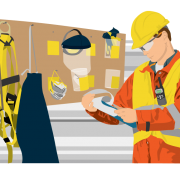How to build a safety culture with WHS Champions
Nowadays, safety at the workplace has become a major issue. Introducing a safety culture within an organisation can create WHS (work health and safety) awareness among employees. Workplace safety is the responsibility of every staff member, but it’s not that easy to spread awareness and solve behavioural issues.
One successful way for WHS management within the organisation is building a network of WHS champions. Then the message of safety can be communicated with ease among the employees.
Before discussing the role of the WHS champion, let me explain who the WHS champion is.
WHS champions are the employees selected by the organisation to develop WHS management within the workplace. They are like the heart of a strong health and safety culture. They are the people committed to safe work practices and to the safety of their colleagues too. They take an active role on safety committees or lead from the front among their colleagues.
Any employee can be a WHS champion. One company can give this responsibility to the project manager who is trained at supporting safe behaviour while others can give it to the HR executive who looks after all the matters of employees as well as the head of the health and safety committee.
No two WHS champions possess the same qualities but almost every one of them has a unique quality that helps them to be successful. Let’s have a look at few of those qualities.
-
Good communication skills : WHS champions have good communication skills and are always open for discussion. They identify the problems, try to resolve them and convey the messages regarding problems and awareness to employees
-
Lead from the front : WHS champions look for the safety of the others and also set the rules, but before that they lead from the front by changing their own behaviour patterns, influencing others to follow the safety practices. If any WHS champion is a part of top management, he or she can set the example by regularly attending training and following rules as an example to new employees. This conveys the message that the safety is taken seriously be all staff.
-
Take initiative : WHS champions, if in a higher position, develop the safety policies in order to provide proper directions and training to every employee. They also schedule the WHS audits (conducted once every 2 years) and update guidelines and training programs according to the feedback received in the audit. Even if they are staff members, they take the initiative to make sure that rules are followed strictly.
-
Recognise the human factors that prevent compliance : WHS champions recognise human factors like tiredness, frustration and anxiety which cause injuries. They encourage their colleagues to take breaks and the safest procedures in order to prevent possible hazards.
-
They are encouraging : An important part of building a strong safety culture is to pay attention to those doing a good job and leading the improvements. WHS champions notice these things and celebrate the success of their colleagues and acknowledge them by giving rewards.
Once a WHS champion network is established, the ideas are shared regularly and the motivation is maintained within the group. Remember, the role of the WHS champions is promoting positivity, bringing about new ideas and sharing the information.







